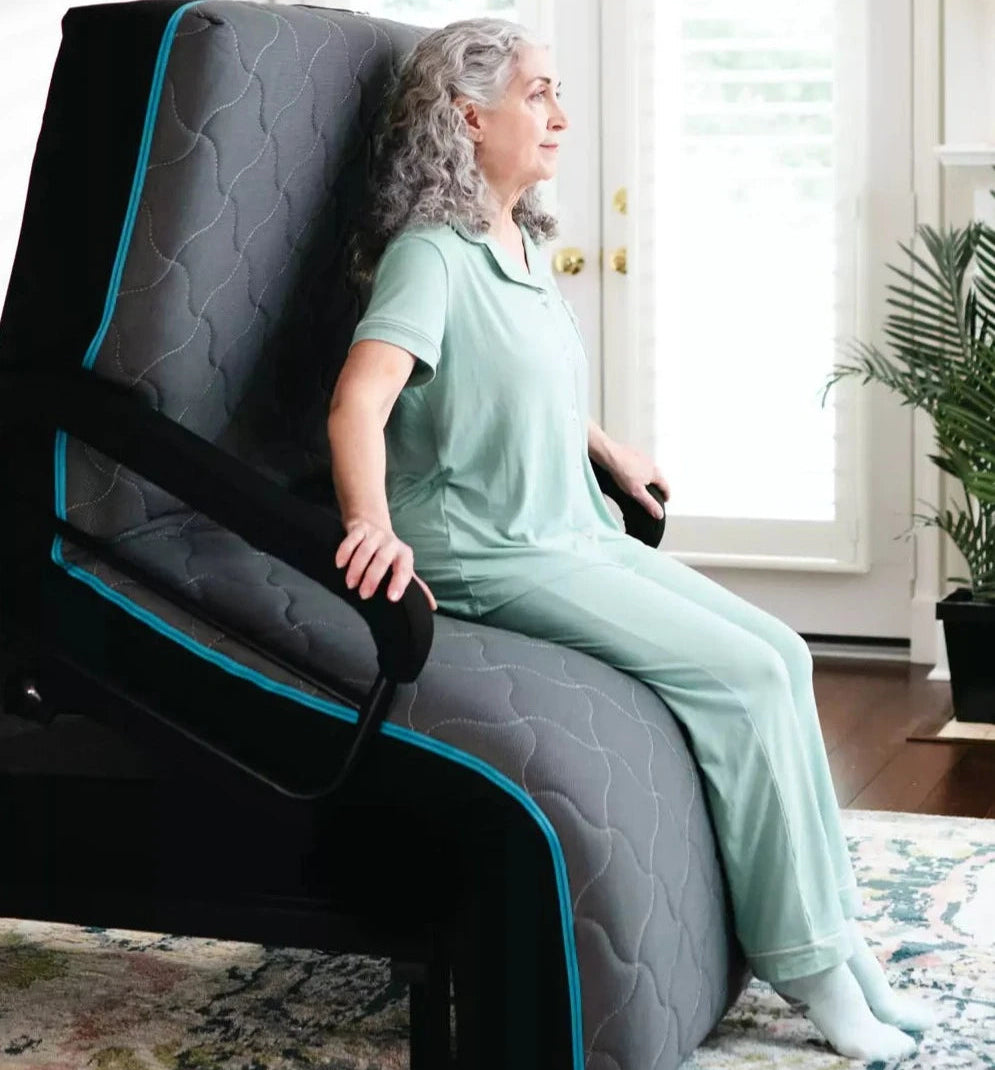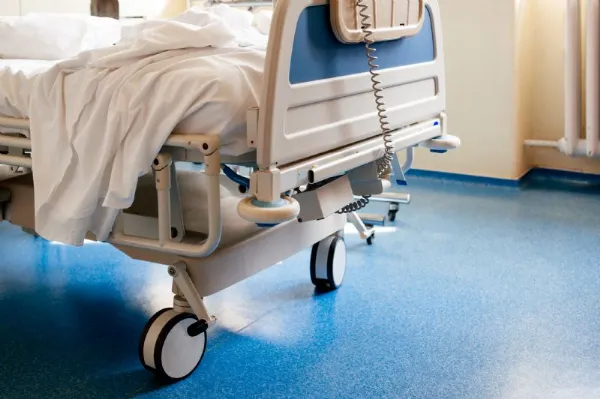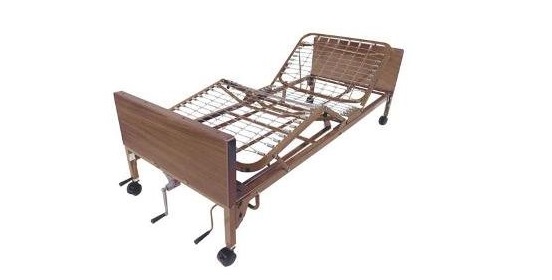Hospital Beds For Home Use - Truths
Table of ContentsNot known Facts About Hospital Beds For Home UseHospital Beds For Home Use Can Be Fun For AnyoneAbout Hospital Beds For Home UseHow Hospital Beds For Home Use can Save You Time, Stress, and Money.Hospital Beds For Home Use Things To Know Before You BuyHospital Beds For Home Use Fundamentals ExplainedThe Hospital Beds For Home Use Diaries
There are three main kinds of healthcare facility beds: guidebook, semi-electric, and fully-electric. More kinds of medical beds exist and they are provided below. These beds utilize hand cranks to adjust the bed's height and elevate and decrease the head and the foot. Hand cranks are typically found at the foot of the bed and need a person that is literally efficient in operating.
Semi-electric beds have an electrical motor to raise and lower the head and foot portions of the bed. Patients and caregivers change the placing by pressing buttons utilizing a hand pendant. The elevation of the bed is changed manually with a hand crank. Full-electric beds have an electric motor that can increase the head and foot sections of the bed as well as the entire height and positioning of the bed.
9 Easy Facts About Hospital Beds For Home Use Described
Some models can also relocate right into more positions, such as the Trendelenburg (tilt) position. There are a number of kinds of hospital beds, each created to satisfy details individual needs. Here are some usual types: This is the most typical sort of medical facility bed, designed for basic clinical usage. It has a handbook or electrically adjustable headrest, footrest, and height.
Reduced to the ground than a basic bed. This type of bed is developed for larger individuals, with a wider framework and higher weight ability than a common bed.
This kind of bed is designed for critically sick patients who need open tracking and specialized medical tools such as ventilators and mixture pumps. This type of bed is developed for usage throughout labor and distribution, with flexible placements and functions to support the mom and baby throughout the birth procedure.
The Ultimate Guide To Hospital Beds For Home Use
Several feature and the accessories do increasing traction to different components of the vertebra and the extremities without moving the body. These are simply a couple of examples of the kinds of hospital beds offered. The particular kind of bed made use of will rely on the individual's problem, clinical demands, and other variables.
Right here is the thing you require to recognize. A one-function hospital bed is a medical bed that allows a client to relocate just the head or foot section up or down. A 2 function hospital bed typically describes a sort of clinical bed that has two adjustable features to help patients in health centers or treatment centers.

Facts About Hospital Beds For Home Use Uncovered
A 7-function ICU bed is a sort of medical bed that offers numerous adjustable functions to support critically unwell patients in a critical care unit (ICU) (hospital beds for home use). The seven functions usually include: Back-rest modification: The backrest can be gotten used to numerous angles to help the client sit up or rest conveniently
Elevation modification: The bed can be increased or lowered to make it simpler for clients to enter and out of bed, and for caregivers to provide care. Trendelenburg setting: The entire bed can be tilted to promote blood flow and flow in the body. Reverse Trendelenburg position: The bed can also be slanted in the opposite instructions to promote blood circulation and flow in the top body.
1. What Dimension is a Health Center Bed? 2. How Much Does a Medical Facility Bed Cost? 3. Why Do Healthcare Facility Beds Have Side Bed Rails? 4. What Are The Key Health Center Bed Parts?. While more cost effective than electric models, these beds need exertion for modifications. The primary benefits of hand-operated beds are their cost and integrity, as YOURURL.com they don't rely on power. However, the demand for hand-operated initiative can be a restriction in situations where fast changes are needed or where caretakers face physical obstacles.
The Only Guide for Hospital Beds For Home Use
They are fit for patients that require marginal repositioning for convenience or medical needs. Semi-electric healthcare facility beds use an equilibrium of guidebook and electrical controls. The head and foot sections are normally readjusted with electrical controls, while the elevation is adjusted by hand. These beds give an excellent happy medium in between handbook and fully electric choices, supplying convenience of usage without the complete expense of electric designs.
Semi-electric beds are appropriate for people who need moderate modifications to the head and foot areas but can manage without constant height modifications. This makes them an economical remedy for those seeking convenience and benefit without the requirement for consistent repositioning. Fully electric healthcare facility beds include electrical controls for smooth changes to the height, head, and foot sections.
Specialty medical facility beds, such as ICU beds, lasting treatment beds, and bariatric beds, are thoroughly designed to address certain medical requirements. These beds provide customized treatment for diverse patient teams, enhancing both results and convenience. In the following areas, we will explore the main sorts of specialty hospital beds, describing their details benefits and applications.
With years of experience in manufacturing address electrical straight actuators - hospital beds for home use and close collaboration with the health care sector, TiMOTION is well-positioned to supply reliable healthcare solutions. Our up and down incorporated company takes care of every step of the manufacturing process, from layout to actuator assembly, guaranteeing we supply remarkable worth and personalized remedies tailored to your particular demands
The Ultimate Guide To Hospital Beds For Home Use

To find out more concerning incorporating these technologies right into your products, call us today. Further reading:.
Information is sourced from the Medicare Expense Report. Accessed January 2025. Short-term severe care health centers have the highest possible average variety of beds at 187. They are the most common kind of hospital in the united state and make up greater than 50% of united state medical facilities. Children's health centers have 178 beds generally and VA health centers typical 175 beds.

The Best Strategy To Use For Hospital Beds For Home Use
A healthcare facility bed is a bed made particularly for clinical objectives. It is not only a place for people to rest, yet likewise a platform for clinical operations. Unlike common home beds, health center beds normally have flexible my link features, which can help with clinical staff to make numerous changes according to the demands of people, such as transforming the height, disposition, and assistance angle of the back and legs of the bed.